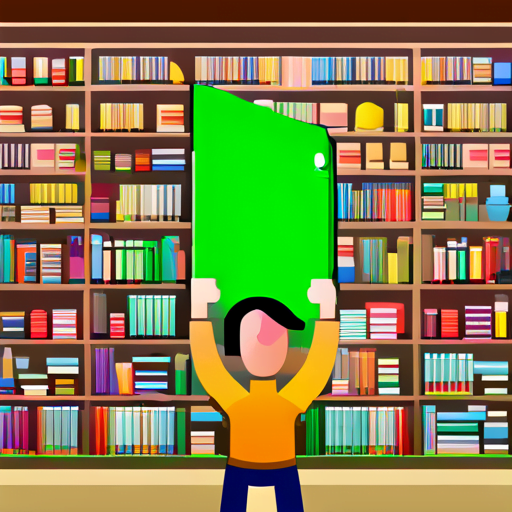Are you struggling to make sense of difficult texts? Do you often find yourself lost in a sea of unfamiliar vocabulary and concepts? Fear not, for you are not alone. Many people face these same challenges when it comes to reading difficult texts. However, with the right strategies and mindset, you can overcome these obstacles and become a more confident and effective reader.
In this guide, we will explore the common reading obstacles that people face and provide practical tips and techniques to help you overcome them. Whether you’re a student tackling a challenging textbook or a professional trying to make sense of complex industry jargon, this guide will provide you with the tools you need to succeed.
So, let’s get started on your journey to becoming a better reader.
Table of Contents
Understand the Importance of Developing a Reading Plan

You need to prioritize developing a plan if you want to conquer challenging readings. It’s easy to feel overwhelmed when faced with a dense or complex text, but having a clear roadmap can make a world of difference.
Start by breaking down the text into manageable chunks, whether that means dividing it by chapters, sections, or even paragraphs. This will help you focus on one piece at a time and prevent you from getting lost in the details.
Next, consider what strategies you can use to make the reading process more efficient and effective. For example, you might try previewing the text by reading the introduction or headings, highlighting key points or unfamiliar vocabulary, or taking notes as you go along.
Experiment with different approaches until you find what works best for you. Remember, the goal isn’t just to finish the reading, but to understand and retain the information.
By developing a plan, you can approach even the most challenging texts with confidence and clarity.
Strategies for Tackling Difficult Vocabulary and Concepts

When you encounter difficult vocabulary and concepts in your reading, try breaking down sentences into their smallest parts. This will help you understand the meaning of each individual word and how they work together in a sentence.
Additionally, use context clues to decipher the meaning of unfamiliar words and look up any unknown words to further clarify their meaning. By using these strategies, you can enhance your understanding of difficult texts and improve your overall comprehension skills.
Break Down Sentences into Their Smallest Parts
When you encounter a complex sentence, it can be overwhelming to try and make sense of the entire thing at once. Instead, start by identifying the subject and verb of the sentence. Once you’ve got these key components, try to identify any modifiers or phrases that’re providing additional information. By breaking the sentence down into these smaller parts, you can start to parse out the meaning and better understand the author’s intention.
Breaking down sentences can also help you identify any grammatical errors or inconsistencies in the text. If a sentence doesn’t make sense, try to identify which part is causing the confusion. Perhaps the subject and verb don’t agree, or there’s a misplaced modifier.
By breaking down the sentence, you give yourself the opportunity to identify and correct these errors. Don’t be afraid to take your time with each sentence and really dig into the details. With practice, you’ll find that you’re able to read complex texts more quickly and with greater understanding.
Use Context Clues
When faced with difficult texts, it’s important to use context clues to decipher the meaning behind unfamiliar words or phrases. Context clues can be found in the sentences before and after the unfamiliar word, as well as in the larger themes and ideas presented in the text.
For example, if you come across the word ‘ebullient’ in a text, you might be unsure of what it means. However, by looking at the surrounding sentences and themes, you can make an educated guess.
Perhaps the author is describing a joyful and energetic scene, with people laughing and dancing. In this context, ‘ebullient’ likely means exuberant or full of energy.
By using context clues, you can gain a deeper understanding of the text and appreciate the author’s message.
Look up Unknown Words
This will not only give you a better understanding of the text, but it’ll also help you to build your vocabulary for future readings.
When looking up unknown words, it’s important to not only focus on the definition but also the context in which the word is being used. Sometimes a word can have multiple meanings and it’s important to understand which one is being used in the text.
Additionally, if you find yourself frequently looking up words, consider keeping a list to review periodically. This will help you to retain the new vocabulary and make it easier to remember in future readings.
Identifying Key Concepts

It’s important to identify key concepts when tackling challenging reading material. This means looking for the main ideas or themes that the author is trying to convey.
You may need to read through the text several times to fully understand the concepts, but once you do, it will be easier to comprehend the details and nuances of the text.
One way to identify key concepts is to look for repetition. If a certain word or idea is mentioned multiple times, it’s likely a key concept.
You can also look for transitions between paragraphs or sections, as these often indicate a shift in the author’s focus.
Additionally, pay attention to bolded or italicized words, headings, and subheadings, as these often signal important concepts.
By identifying key concepts, you can better understand the overall message of the text and make connections between different ideas.
In conclusion, identifying key concepts is a crucial step in overcoming reading obstacles. It can take time and effort, but it will ultimately lead to a deeper understanding of the text.
Keep an open mind and be willing to reread sections to fully grasp the main ideas. With practice, you’ll be able to tackle difficult texts with more ease and confidence.
Using Effective Reading Strategies

Mastering effective reading strategies is crucial to understanding complex texts and unlocking their hidden meanings. These strategies can help you break down the text into manageable parts, identify important information, and stay engaged throughout the reading process.
One effective strategy is to preview the text before reading. This involves scanning through the text to get a general sense of what it’s about, and identifying any headings, subheadings, or other organizational features. This can help you develop a mental framework for the information you’re about to read, making it easier to understand and remember.
Another strategy is to actively engage with the text as you read. This means asking questions, making connections, and summarizing key points as you go. By doing this, you’re not just passively absorbing information, but actively processing and retaining it.
These are just a few examples of the many effective reading strategies you can use to overcome common reading obstacles and unlock the full potential of complex texts.
Frequently Asked Questions
How can I improve my reading speed while still comprehending difficult texts?
First, try to eliminate distractions and create a quiet environment so you can focus on the material.
Next, practice scanning the text before you start reading it in detail. This can help you identify the main points and get a sense of the structure of the piece.
Finally, try to read actively by engaging with the material and asking questions as you go along. This will help you stay focused and retain more information.
With a little practice, you can improve your reading speed and comprehension even with difficult texts.
How do I know if I am correctly identifying the main ideas and themes in a difficult text?
Additionally, you can look for recurring themes or motifs throughout the text and consider how they relate to the overall message. It’s also important to take notes and actively engage with the text, asking yourself questions and making connections as you read.
By using these strategies, you can improve your ability to identify the main ideas and themes in even the most challenging texts.
What can I do if I find myself getting distracted or losing focus while reading a difficult text?
First, try to eliminate any external distractions, like turning off your phone or finding a quieter area to read in.
You can also try breaking up the text into smaller sections and taking breaks in between to avoid mental fatigue.
Additionally, actively engaging with the text by underlining or taking notes can help improve focus and retention.
Lastly, if you’re struggling to understand the text, don’t be afraid to seek additional resources or ask for help from a teacher or tutor.
Are there any specific tools or resources that can help me better understand challenging vocabulary or concepts?
One option is to use a dictionary or thesaurus to look up unfamiliar words and synonyms. Another helpful tool is to make use of online resources, such as Wikipedia or educational websites, to gain a better understanding of difficult concepts.
Additionally, taking notes and highlighting key points can help you better retain information and comprehend the text.
By using these tools and resources, you can improve your understanding of challenging texts and overcome obstacles to successful reading.
How can I apply the skills and strategies learned from reading difficult texts to other areas of my academic or professional life?
By breaking down complex concepts into smaller, more manageable parts, you can better understand and apply them to your work.
Additionally, using active reading techniques such as note-taking and summarizing can help you retain information and make connections between different ideas.
Lastly, don’t be afraid to ask questions or seek out additional resources to deepen your understanding. With practice, you can become a more confident and effective learner in all aspects of your life.
Conclusion
Now that you’ve learned about the importance of developing a reading plan, strategies for tackling difficult vocabulary and concepts, identifying key concepts, and using effective reading strategies, you’re well-equipped to overcome common reading obstacles.
Remember, reading difficult texts can be a challenging process, but with the right mindset and tools, you can overcome any obstacle. Keep practicing and implementing these strategies, and you’ll see improvement in your reading comprehension and retention.
Don’t be afraid to ask for help or seek out additional resources if you need them.
Happy reading!
